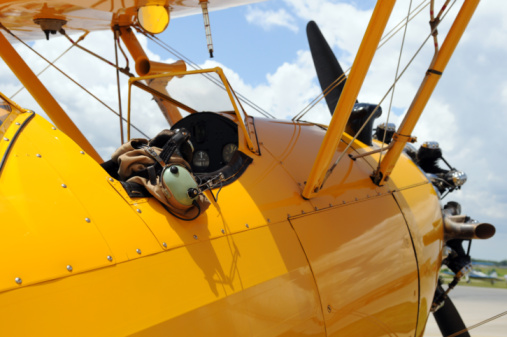
Constant awareness of position is critical for aircraft pilots, especially during long flights over water. Before the days of GPS and satellite communications, pilots depended on teamwork and precise calculations to determine their position in the skies. Here are a few ways pilots navigated in the days before satellites:
Celestial Navigation
Before GPS, pilots used the sun, moon, and stars to determine their position in flight. Using a tool called a bubble sextant, pilots could measure the altitude of a celestial body. Aircrew looked through the eyepiece and aligned the sextant’s crosshairs with a star to measure its angle above the horizon, which helped them calculate the aircraft’s latitude.
Driftsight
The driftsight was an inverted periscope extending from the bottom of an airplane. Flying over the ocean, navy aircrew would look through the driftsight at the waves moving below and measure the wind speed using simple geometry. The tool was used to help pilots determine the difference between the aircraft heading and its intended track. However, the driftsight was only useful in low altitude daytime flights.
Dead Reckoning
On Charles Lindbergh’s famous non-stop solo flight to Paris from the United States, he navigated his way using dead reckoning. Dead reckoning is calculated using a previously determined position to estimate one’s current position, taking into account the elapsed flight time and speed of the aircraft. Dead reckoning is taught to basic level pilots worldwide, regardless if the aircraft has GPS navigation aids.